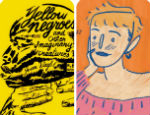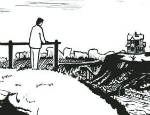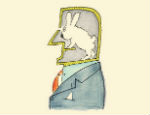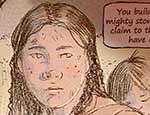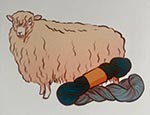Over the last few years we have reviewed a number of books from the direction of New York Review Books/New York Review Comics. Putting their original material to one side for a moment they have also republished classic work that was both vitally important in its day, seminal and pivotal in retrospect, and also deserving of being introduced to new audiences. Our coverage of such ofdferings has included work like William Gropper’s early 1930 graphic novel Alay-Oop, the socialist cartooning of Syd Hoff in The Ruling Clawss, and jay Jackson’s 1940s anti-racist newspaper strip Bungleton Green and the Mystic Commandos. It’s a catalogue of work the republication of which seems as much a service to the medium as it does a commercial venture, with today’s subject, All in Line by Saul Steinberg, being no exception.
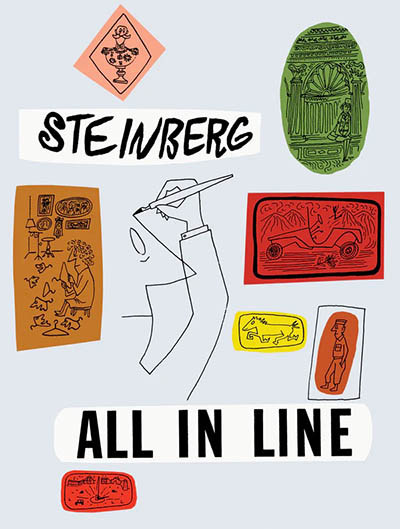
For the uninitiated Steinberg is most renowned for his contributions as a cartoonist to the New Yorker, particularly his 1976 cover titled ‘View of the World from 9th Avenue’. Those interested in more on Steinberg at Broken Frontier should be directed to our Lindsay Pereira’s review of a previous New York Review Books reprint in the shape of The Labyrinth back in 2019. All in Line was his first collection, originally published some 80 years ago, and combines witty absurdist cartoons with observational visual commentary on the era, all drawn from his wartime experiences working for the Office of Strategic Services in China, India, North Africa and Italy.
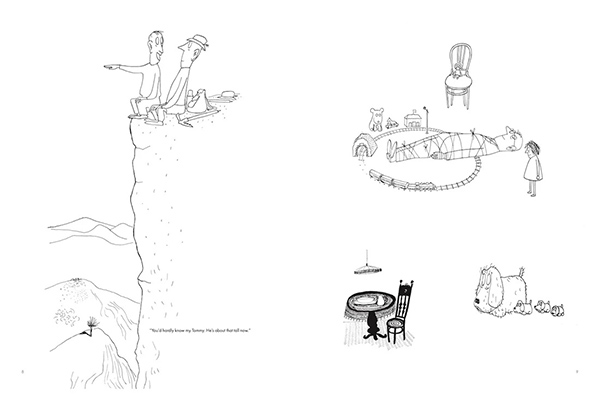
The book is divided into sections to reflect this, with the first bringing together lighthearted early Steinberg cartoons that have a sense of whimsy or playfulness to them, like the perspective-distorting humour of a proud father inadvertently adding incalculable height to his absent son or the authority-challenging antics of a child and their toy railway set (above). The follow-up to this is a selection of cartoons on the subject of ‘War’ which often have a fiercely anti-fascist bite. Unsurprising, given the Romania-born Steinberg’s flight from Italy in the late 1930s.
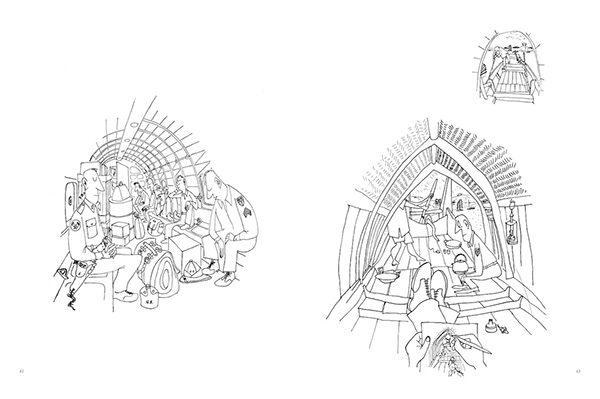
All in Line then moves into chapters of a sort on his journeys through China, India, North Africa and Italy, creating a travelogue of sorts; individual illustrations building up a wider narrative when considered as a whole rather than as vignettes. Throughout, Steinberg’s approach to the page is one of dualities, with a line that embodies both clarity and complexity, accessibility and intricacy. An extensive section of notes on each illustration/cartoon, alongside Iain Topliss’s context-setting afterword on the origins of the book, and Liana Finck’s personal thoughts in the foreword, all make this a comprehensive re-offering of the original work.
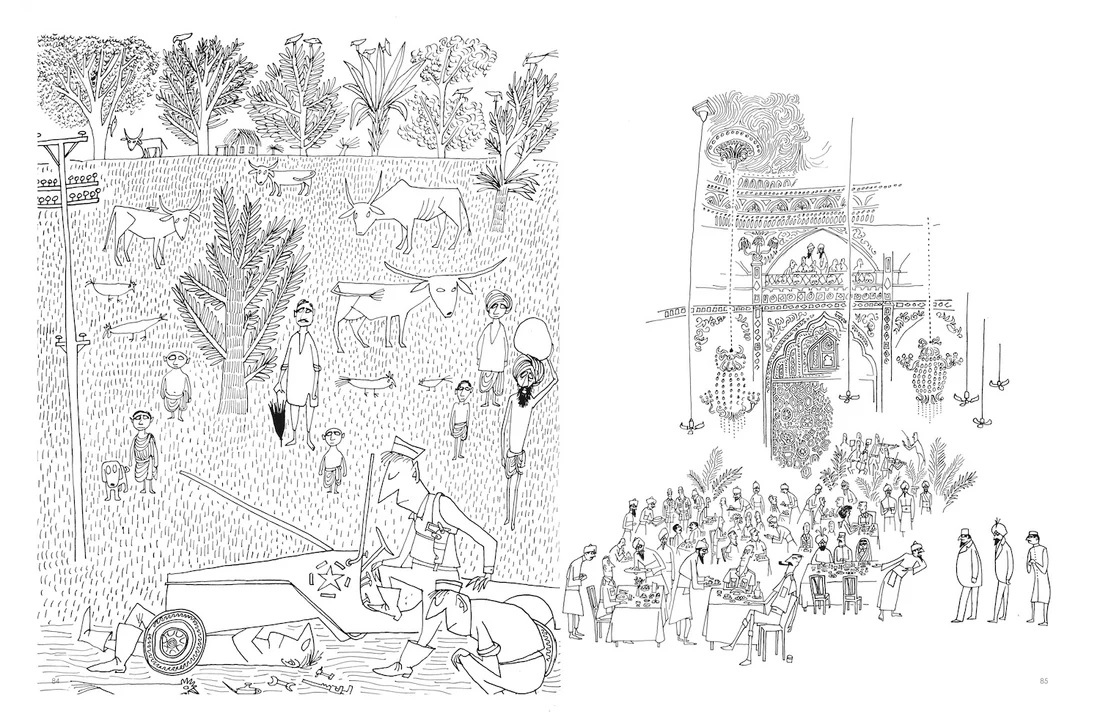
Again it’s worth reminding readers that NYRB/NYRC’s commitment to reviving interest in milestones in cartooning and comics is a vitally important one. All in Line is a perfect entry point to Saul Steinberg’s career and practice.
Saul Steinberg (W/A) • New York Review Books, $34.95
Review by Andy Oliver





